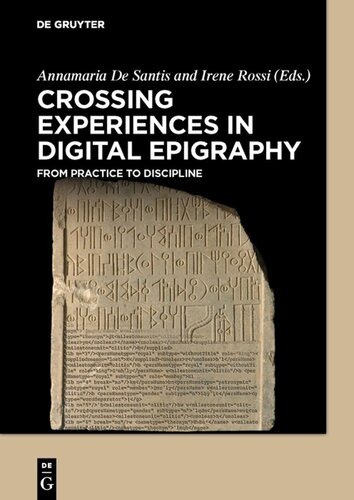

Most ebook files are in PDF format, so you can easily read them using various software such as Foxit Reader or directly on the Google Chrome browser.
Some ebook files are released by publishers in other formats such as .awz, .mobi, .epub, .fb2, etc. You may need to install specific software to read these formats on mobile/PC, such as Calibre.
Please read the tutorial at this link: https://ebookbell.com/faq
We offer FREE conversion to the popular formats you request; however, this may take some time. Therefore, right after payment, please email us, and we will try to provide the service as quickly as possible.
For some exceptional file formats or broken links (if any), please refrain from opening any disputes. Instead, email us first, and we will try to assist within a maximum of 6 hours.
EbookBell Team

0.0
0 reviewsAlthough a relevant number of projects digitizing inscriptions are under development or have been recently accomplished, Digital Epigraphy is not yet considered to be a proper discipline and there are still no regular occasions to meet and discuss. By collecting contributions on nineteen projects – very diversified for geographic and chronological context, for script and language, and for typology of digital output – this volume intends to point out the methodological issues which are specific to the application of information technologies to epigraphy.
The first part of the volume is focused on data modelling and encoding, which are conditioned by the specific features of different scripts and languages, and deeply influence the possibility to perform searches on texts and the approach to the lexicographic study of such under-resourced languages. The second part of the volume is dedicated to the initiatives aimed at fostering aggregation, dissemination and the reuse of epigraphic materials, and to discuss issues of interoperability.
The common theme of the volume is the relationship between the compliance with the theoretic tools and the methodologies developed by each different tradition of studies, and, on the other side, the necessity of adopting a common framework in order to produce commensurable and shareable results. The final question is whether the computational approach is changing the way epigraphy is studied, to the extent of renovating the discipline on the basis of new, unexplored questions.